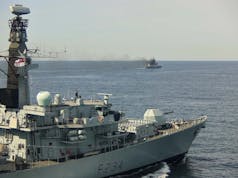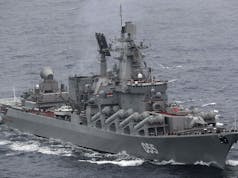How are the Royal Navy making sure their submarines are safe?
Andrea Jenkyns, MP for Morley and Outwood, asked via a written Parliamentary question:
“To ask the Secretary of State for Defence, what steps the Government is taking to minimise the risk of covid-19 amongst personnel in the Royal Navy Submarine Service.”
James Heappey, The Parliamentary Under-Secretary of State for Defence, answered:
“Mitigation measures are being put in place to minimise the risk of COVID-19 onboard a submarine and to maintain the health and wellbeing of their ships’ companies. The Submarine Service is following Public Health England (PHE) guidelines where practical for all personnel and, to reduce the risk of transmission, further emphasis is being placed on the cleaning of communal areas and personal hygiene. Measures have been introduced prior to sailing which involve the whole ship’s company quarantining onboard the submarine. In addition, personnel who are, or whose households are, symptomatic will be isolated before embarking, in accordance with PHE self-isolation guidelines.
Any individual who experiences symptoms while at sea will isolate onboard in accordance with PHE guidelines and receive the appropriate medical attention, until either recovery is established or they can be safely removed and returned to shore.”
Wondering how ships do it? NATO discussed that recently.
According to a news release from the Alliance:
“All our missions have robust procedures in place to protect our people and prevent the spread of the virus. The particular action of each ship is dictated by the ship’s national policies. In general, it’s limiting contact between ships, hand washing, disinfecting of supplies transferred, routine ship dis-infecting and, when in port for resupply, crews are not allowed to leave their ships. Our ships are essentially self-quarantined in place as units. Because of these enhanced measures that were undertaken weeks ago, we have not seen active transmission within any of NATO’s Standing Naval Forces. So far, all our forces are able to continue conducting missions in a manner that takes precautionary measures, while still ensuring readiness. Our forces remain prepared, vigilant, and ready to act if called upon.”
Read more about measures undertaken on ships like HMS Queen Elizabeth here.













Why did they not test the crew and quarentine them until the results came back and they where safe to deploy.
Firstly, False Positives and False Negatives. The tests are not 100% accurate.
So the crew isolate for 2 weeks get tested as well and minimise contact with the outside world which reduces the risk to ALARP.
Measures in place are
None Ships Crew embarking are limited to as few as possible and only for pre agreed essential reason. Visitors are to have scrubbed up before embarking, be temp checked, make a declaration of no symptoms or travel in the past 14 days, be masked, maintain 2m distancing from the crew and dont touch stuff if at all possible.
On this I am speaking from experience as that is what I am doing most days!
I wonder if the next Trident sub is gearing up early in case the one on patrol has to return early ? Of course that would mean the crew of the next sub in quarantine now so they don’t take a potential carrier with them.
A cold goes round a boat quick enough, I would guess they’re relying on quarantines more than anything.
“Officer of the Watch dive the submarine”. Job done.